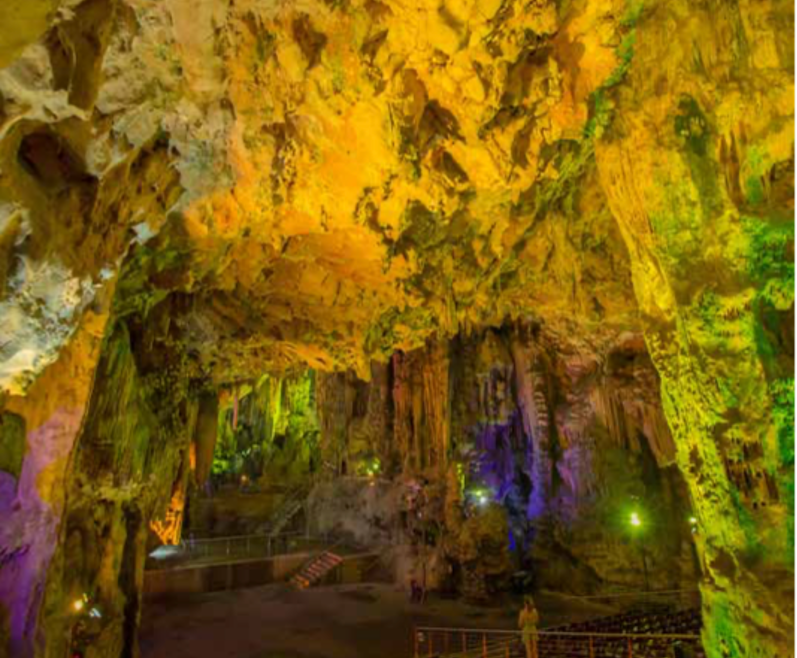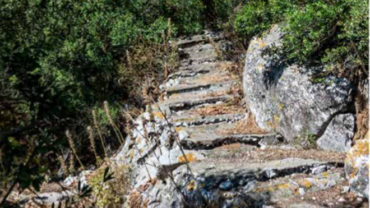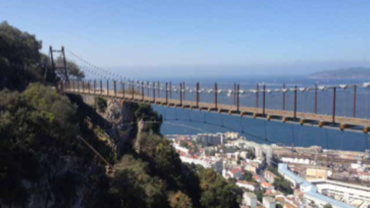UNESCO World Heritage Site in Gibraltar
Gorham’s Cave Complex World Heritage Site and Tours
The Gorham’s Cave Complex is the name given to the area covering some 28 hectares on the eastside of Gibraltar from sea level to the top of the Rock. In July 2016, it was inscribed as a UNESCO World Heritage Site for its exceptional testimony to the occupation, cultural traditions and material culture of Neanderthal and early modern human populations through a period spanning approximately 120,000 years. The striking cluster of sea level caves contain archaeological deposits that provide evidence of Neanderthal and early modern human occupation of Gibraltar, and the landscape setting and natural species which assist in presenting the natural resources and environmental context, including climatic conditions, of Neanderthal life. The Gibraltar Nature Reserve forms part of the buffer zone to the WH site and together they represent over 40% of the territory of Gibraltar.
Gibraltar has a longstanding association with the Neanderthals. The first complete skull was found and presented to the Gibraltar Scientific Society by Lieutenant Edmund Flint of the Royal Artillery in 1848 – eight years before the famed remains found in the Neander Valley near Dusseldorf in Germany, which gives its name to these people. A second skull – the Devil’s Tower Child – was found in Gibraltar in 1926.
The Gorham’s Cave Complex is of major significance in understanding the global story of human evolution and adaptation. Gorham’s and Vanguard Caves have been archaeologically excavated over the past 26 years, and results have shown that Gibraltar was last refuge for the Neanderthals around 32,000 years ago.. An international, multi-disciplinary research project has revealed the vital importance of the site in our understanding of a critical juncture in human evolution and of the Neanderthals in particular. Now there is a wealth of information on where and how the Neanderthals and early modern humans lived and behaved, what plants, birds and animals they were familiar with and ate, where they acquired materials for their tools and what their environment was like. There is evidence of their complex social behaviour, dress and unique elements including a rock engraving carved by the Neanderthals in Gorham’s Cave, which indicate their ability for abstract thought.
TOURS OF GORHAM’S CAVE
Gorham’s and Vanguard Caves are spectacularly sited on the eastern shore of Gibraltar, and visiting them is a very memorable experience. However, they are moderately difficult/difficult to access on foot. No visits are allowed within 48 hours of bad weather, and visits may have to be postponed at short notice if the weather is adverse.
Areas of the sea cave complex that can be visited and numbers of visitors allowed may vary from time to time. The standard tour, for up to 5 people, is to the entrance of Gorham’s Cave, but not inside, in order to protect the fragile archaeological deposits. All visits must be escorted by guides from the Gibraltar National Museum.
Mediterranean Steps
Mediterranean Steps is a steep, at times arduous, walk and is not for people without a head for heights. Early mornings are usually preferable, but during the summer months a late afternoon walk will provide the visitor with plenty of much-needed shade. The area is particularly appealing during the spring, when the visitor is greeted by an interesting and very beautiful array of flowers. Mediterranean Steps take the walker from Jews’ Gate on the southern end of the Nature Reserve at 180m above sea level, up towards O’Hara’s Battery at 419m, close to the summit of the Rock.
The path runs mainly along the eastern side of the Rock, an area that is comprised primarily of cliffs and low Mediterranean scrub. The walk starts beside Jew’s Gate Cemetery, leading south through some dense maquis, which gradually opens out, from which the walker is afforded a spectacular view of North Africa across the Strait. From here, we continue along a narrow path that borders along the edge of cliffs and at this point we begin to appreciate the silence and serenity that this path has to offer, and the cries of the yellow-legged gulls are frequently all that can be heard. Carrying on north along this path past the steps leading upwards, we begin to ascend a steep flight of steps that leads to the Goat’s Hair Twin Caves – it is amazing to consider that these caves, were once at sea level! Excavations and research work indicate that prehistoric people once lived on the Rock and inhabited many of our caves, including those found on Mediterranean Steps which is in the UNESCO World Heritage Site. Continuing the climb, we reach a building that was constructed by the military during WWII. Here, we finish the first flight of steps, and commence a path that leads through a small tunnel and on towards some WWII fortifications.
We now reach a platform that offers the visitor a unique view northwards. The path winds its way upward, and starts to get steeper. Looking up towards the top of the Rock, we can now see the zig-zagging stairway that hugs the cliff and leads to the end of the walk. Here, we also encounter another set of WWII fortifications. Following the track, the walker arrives at the base of the cliff, where the final flight of steps subjects the visitor to a last, strenuous effort in order to reach the summit.
Halfway up these steps we find Spider Cave, a small hollow that was used during WWII. At the summit immediately to the south lies Lord Airey’s and O’Hara’s Batteries two 9.2 inch guns, found at these emplacements installed at these sites during WWII, and were last fired by the Royal Gibraltar Regiment in 1972. This is where the walk ends, one can then either retrace their steps, or preferably follow the road down to St. Michael’s Cave or northbound towards Prince Philip’s Arch.
UNESCO World Heritage Site Viewing Platform
It was in July 2016, that Gibraltar’s successful bid for UNESCO World Heritage status was announced for the Gorham’s Cave Complex. The Viewing Platform is within the World Heritage Site and provides the perfect vantage point from which to view the Neanderthal Caves. The caves themselves are subject to an annual quota of visitors because of their archaeological sensitivity and this facility provides spectacular views and interpretation of the site without risk of causing damage to the fragile archaeology. The platform has a series of interpretation panels which tell not just the story of the UNESCO World Heritage Site but of the area as a whole. At this wonderfully scenic lookout one see the unique views of the entire World Heritage Site which extends to the highest point of the Rock at O’Hara’s Battery, 426m, 1400 feet above sea level, including Mediterranean Steps.










